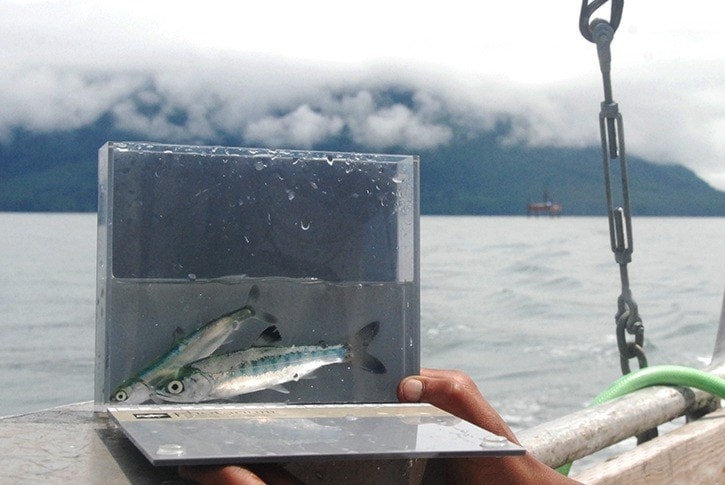The Prince Rupert Environmental Society believes the Pacific NorthWest LNG project would have significantly adverse effects on the Skeena River, it's estuary and the species that depend on it.
Late last month, researchers shared their concerns on the project, based on analysis they conducted at a society meeting.
Dr. Barb Faggetter, a registered professional biologist with a Bachelor of Science in chemistry/biochemistry and a PhD in biological and chemical oceanography, has been an independent researcher in the area for 20 years specializing in ecosystems and the ocean. An issue Faggetter has with Pacific NorthWest LNG is its proximity to Flora Banks, a "very important site in the Skeena estuary".
"Most of the salmon we are getting are coming out of the Skeena River and they're coming out across Flora Banks. It's not that it's just a good habitat, it's location is important," she said.
Charmaine Carr-Harris, a masters student at Simon Fraser University, echoed the importance of the estuary for salmon.
"The estuary contains salmon from all parts of the Skeena Watershed, which contains hundred of different populations of six different species of salmon," she said.
Carr-Harris was part of a field project looking at the temporal and geographic distribution of juvenile salmon species in the Skeena estuary and the effect developments could have on fisheries.
The field project included genetic identification of salmon, showing the area slated for development supports smolts from at least 13 different sockeye stocks and four different chinook stocks.
Carr-Harris was disappointed the environmental assessment didn't present data on juvenile salmon abundance.
Based on a recent study she conducted, Faggetter said the project's creation would be detrimental to juvenile salmonid habitats. Faggetter said while the juvenile salmon habitat in most of Prince Rupert and Port Edward's foreshore was destroyed by toxic material from the old pulp mill, Flora Banks is still an excellent habitat.
A concern is that dredging required for the project would expose Flora Banks to toxins, said society member Leanna Ruth, who has been researching dredging. She said this would damage eelgrass on Flora Banks, a source of food for juvenile salmon and many other species.
But Brian Clark, environmental advisor coordinating the environmental assessment for Pacific NorthWest LNG, said there is no worry of contamination.
"There are no toxins in the sediment, there are traces of dioxins from the old pulp mill. Those traces are throughout the area, but are well below any thresholds ... it's not toxic," he said, noting hundreds of samples from the top of the surface down to 12 metres deep have been taken.
While Pacific NorthWest LNG has habitat offsetting for eelgrass loss, Faggetter believes LNG surveyors underestimated the size of the eelgrass bed, particularly underneath where the trestle would be.
Clark said the company did aerial surveys of eelgrass beds, and used previously-conducted reports.
"Eighty-five per cent of the habitat remains the same. It's been very stable for a number of years," he said, adding surveyors also did a sub-tidal survey with underwater cameras to map habitat not visible in aerial photos, as well as having a biologist cataloging eelgrass beds during low tide.
"We've done an extensive study of eelgrass beds ... from the get go our project has been staying away from Flora Banks. Where we come off Lelu Island we will be touching less than one per cent of eelgrass beds," he said.
But around the same time the proponents did its survey work last summer Faggetter also did an aerial survey of eelgrass and said she recorded 15 times more.
"They did not get anything near an accurate estimate," she said, with Carr-Harris claiming this also happened with fish surveying.
"It was unfortunate to find that our results in the estuary were the most comprehensive data set compared to the consultants doing these multi-million dollar environmental assessment studies, and our results were completely different. With a first-year grad student project and a $20,000 budget we were able to catch fish easily," Carr-Harris said.
According to Clark, the federal government requires industry to measure impact on habitat and the abundance of species, not populations because a variety of factors can affect marine species' population.
